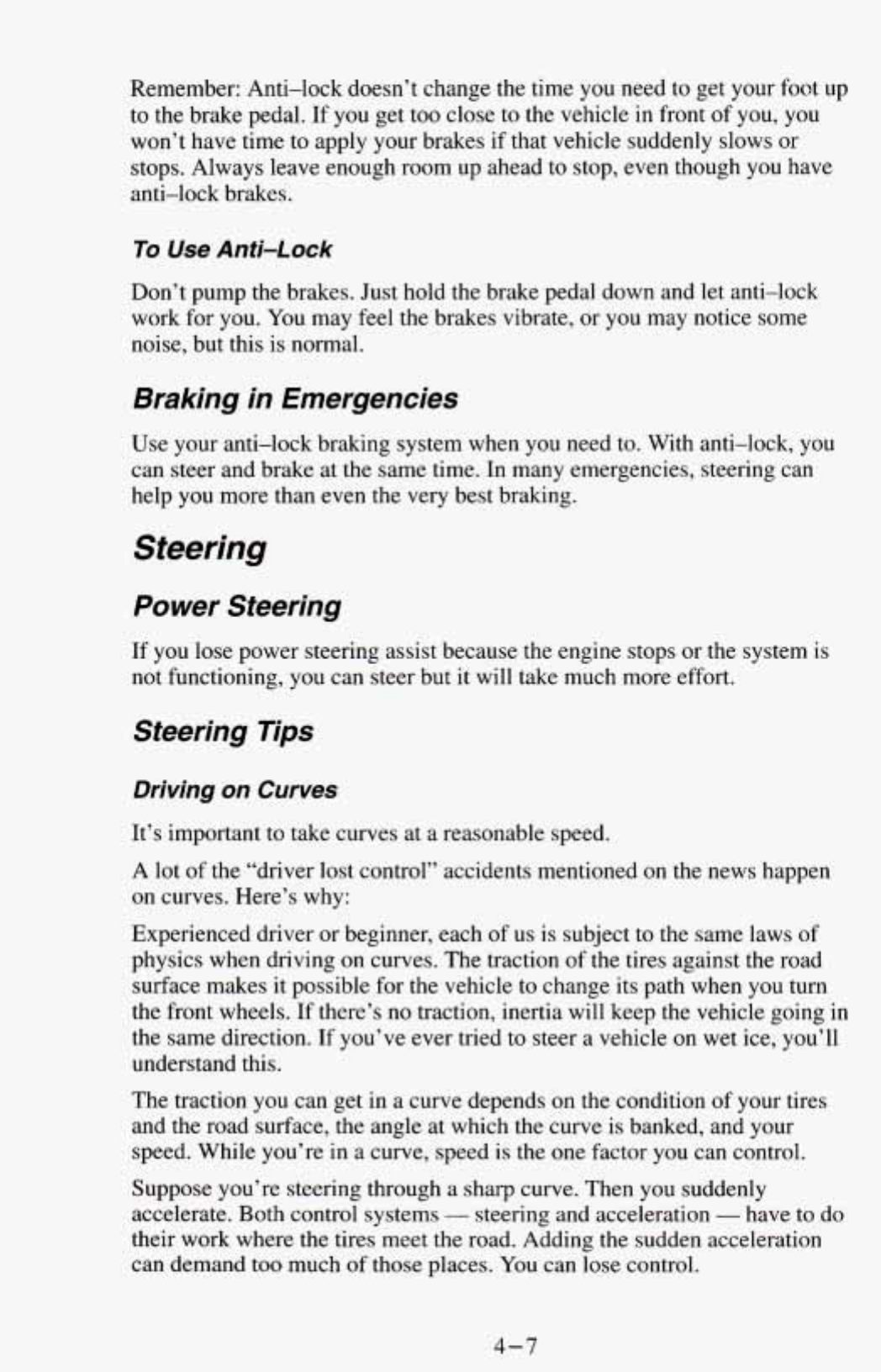
Remember: Anti-lock doesn’t change the time
you
need to get your foot up
to the brake pedal. If you get too close to the vehicle in front of
you,
you
won’t have time to apply your brakes if that vehicle suddenly slows
or
stops. Always leave enough room up ahead to stop, even though you have
anti-lock brakes.
To
Use
Anti-Lock
Don’t pump the brakes. Just hold the brake pedal down and
let
anti-lock
work for you. You may feel the brakes vibrate, or you may notice some
noise, but this is normal.
Braking in Emergencies
Use your anti-lock braking system when you need to. With anti-lock,
you
can steer and brake at the same time.
In
many emergencies, steering can
help
you
more than even the very best braking.
Power Steering
If you lose power steering assist because the engine stops or the system
is
not
functioning, you can steer but it will take much more effort.
Steering
Tips
Driving on Curves
It’s important
to
take curves at a reasonable speed.
A
lot
of
the “driver lost control” accidents mentioned
on
the news happen
on curves. Here’s why:
Experienced driver or beginner, each of us is subject to the same laws
of
physics when driving on curves. The traction
of
the tires against the road
surface makes it possible for the vehicle to change its path when you turn
the front wheels.
If
there’s
no
traction, inertia will keep the vehicle going in
the same direction. If you’ve ever tried to steer a vehicle
on
wet ice, you’ll
understand this.
The traction you can get in a curve depends on the condition
of
your tires
and the road surface, the angle at which the curve is banked, and your
speed. While you’re in a curve, speed is the
one
factor you can control.
Suppose you’re steering through a sharp curve. Then you suddenly
accelerate. Both control systems
-
steering and acceleration
-
have
to
do
their work where the tires meet the road. Adding the sudden acceleration
can demand
too
much
of
those places.
You
can lose control.
4-7


















